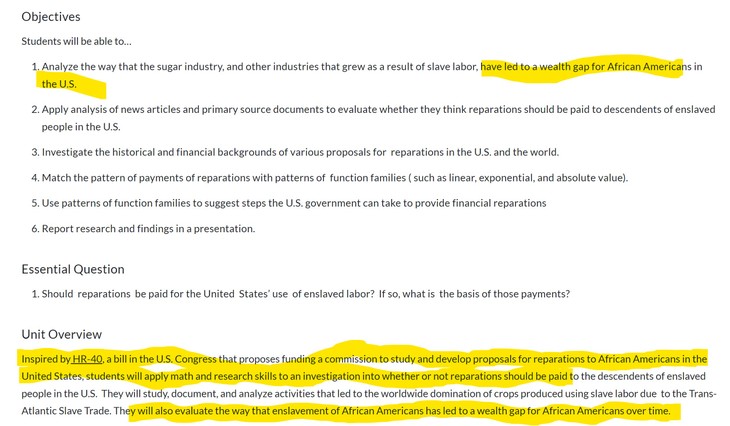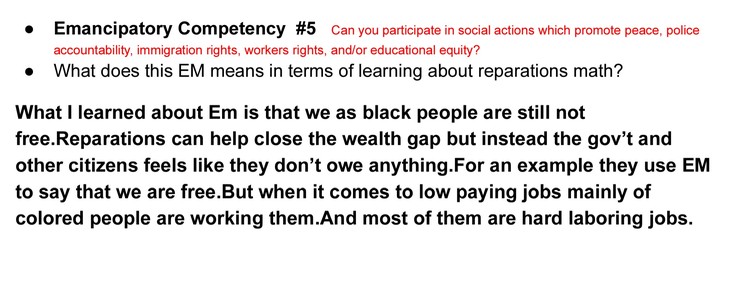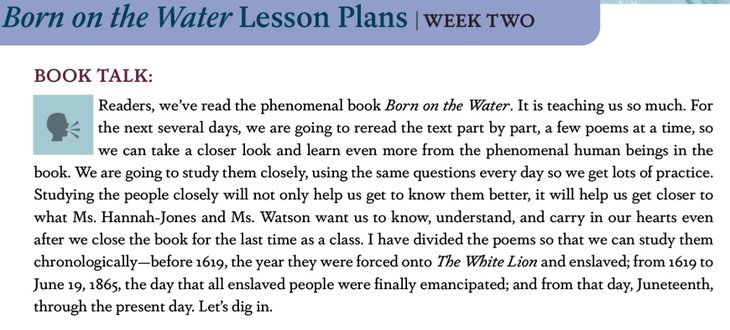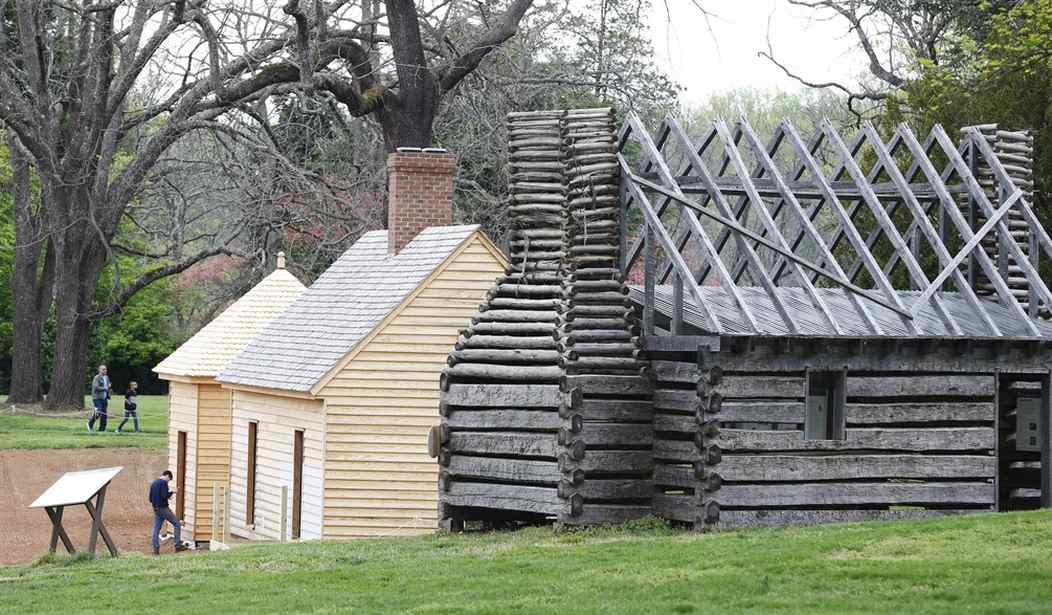This is an interesting and certainly unique educational concept.
Students will be asked to work out the math on the payment for past years of slavery and racial discrimination. A 2020 report found that prior 1619 Project curriculum proposals have been adopted in over 3,500 classrooms across all 50 states… https://t.co/rWM9ODlZ4W
— Jonathan Turley (@JonathanTurley) June 6, 2023
I can’t imagine how popular it’s going to be when parents have a chance to find out that their Little Johnny – who can barely wipe his nose and write his name – instead of adding oranges and apples on a table, will be toting up how much of Dad’s hard earned pocket change should be obligated to compensating, say, the black family that lives next door.
When this whole time Little Johnny just thought they were neighbors and didn’t realize they were “black” or people he and his parents had done something awful to…somehow. Something they should all be horribly ashamed of, carry perpetual guilt for, and fork over cash to assuage the purported wrongs.
The exercise in the teaching guide for the Massachusetts high school version of the 1619 Project’s “Reparations Math and Reparations History” course is supposed to take 3-4 weeks. The essential “question” (QUESTION, mind you) is supposedly:
Should reparations be paid for the United States’ use of enslaved labor? If so, what is the basis of those payments?
But, as you can see from the highlighted areas in the screencap, the answer to the “question” is already built in – there’s no “should” about any of it.

What happens to the neighborhood with this in the classroom?
Let’s say Little Johnny’s best buddy who lives next door, is in the same class. LeBron didn’t know he was supposed to resent Johnny and his family for offenses he hadn’t even known were committed – that they owed him and his family. Maybe Little Johnny’s family has secretly hated them, even though he thought Johnny – who, thanks to this lesson, he also just realized is a different skin color – was his best friend in the whole world.
They can’t be friends now, can they? Turns out Johnny and LeBron are too different, too unequal to be besties.
It says so right in the book.
Strangely enough, that’s not merely projection on my admittedly cynical part, either. One of the examples of an actual student project that they use which is included in the materials comes to basically that same solution.
“Jamari” worked his math problem and concluded the rest of the world still owes him.

Another radical spawned and another division created. Well DONE, faux historians!
As Prof Turley points out, “faux historians” they most certainly are.
…The 1619 Project has long been controversial due to questions over its historical accuracy, including opposition by some history teachers. The project is most associated with former New York Times writer and now Howard University Professor Nikole Hannah-Smith. Hannah-Smith has declared that “all journalism is activism.”
As previously discussed, the objections to the 1619 Project concerned some of its sweeping historical claims over slavery being a motivation for the American Revolution and labeling figures like Abraham Lincoln as racists.
According to The Atlantic, Princeton historian Sean Wilentz criticized that work and some of Hannah-Jones’s other work in a letter signed by scholars James McPherson, Gordon Wood, Victoria Bynum, and James Oakes. They raised “matters of verifiable fact” that “cannot be described as interpretation or ‘framing.’” They objected that the work represented “a displacement of historical understanding by ideology.” The Atlantic noted that “given the stature of the historians involved, the letter is a serious challenge to the credibility of the 1619 Project, which has drawn its share not just of admirers but also critics.” Researchers claimed the New York Times ignored them in raising the errors. The New York Times was criticized later for a “clarification” that undermined a main premise of her writing. None of that appeared to concern the Pulitzer Committee.
But such is the state of American public education, so completely in the thrall of progressive ideology, that the egregious, anti-American, completely fabulist rewriting of history has been adopted in classrooms in all 50 states, without any of the rigorous vetting that textbooks or core curriculum receives.
…Since its publication in August, the 1619 Project has been adopted in more than 3,500 classrooms in all 50 states, according to the 2019 annual report of the Pulitzer Center, which has partnered with the Times on the project. Five school systems, including Chicago and Washington, D.C., have adopted it district-wide. It is mostly being used as supplemental, optional classroom teaching material. By and large, school systems are adopting the project by administrative fiat, not through a public textbook review process.
…The 1619 Project reflects disputes about both the facts and meaning of American history at a time when the nation is divided by identity politics, including a movement to transform education in colleges and high schools through “ethnic studies,” an approach that emphasizes teaching about white oppression of minorities and their resistance to “whiteness.” Proponents of ethnic studies use the term “whiteness” to refer to the political, economic and cultural power structure imposed by a dominant culture of white Europeans.
It’s merely a “supplemental” teaching device. Ever so helpful, no? They do suggest involving both an algebra and history or social studies teacher as the class moves through the course, so there’s interdisciplinary work going on. See?
So helpful.
There’s more material, as well. There’s a lesson guide for another of Nikole Hannah-Jones’ projects for younger kiddos: A children’s book called “Born on the Water.”
I mean, the concept sounds pretty neat. It’s based on her looking for ancestors as a descendant of slaves. In the introduction, she and her co-author are calling it “origin stories.”
…This book is about so many things, but on the surface, it is about a little girl who learns about her family’s heritage from her grandmother. At the beginning of the story, the little girl’s teacher gives her class an assignment. Her teacher wants her students to draw a flag that represents their ancestral land. The little girl is not so sure what to do. She is a Black American, and because her ancestors were enslaved, she feels ashamed that she does not know about her family’s history before her great-grandparents. I can’t wait for you to find out what happens when the little girl gets home and tells her grandmother about her assignment!
Then it starts to go off the rails…
…Readers, this ship was called the White Lion. It transported the people we saw on the first page we took a look at from the Kingdom of Ndongo in West Central Africa to the English colony of Virginia in 1619. The people were taken from their homes and enslaved. When a person is enslaved, are forced to become property of another person; they lose their freedom. The person who owns them is called an enslaver. An enslaver holds an enslaved person captive, controls their actions—they tell them what they can and cannot do— and makes them work without pay. Enslaving fellow human beings is never okay. But in what became the United States of America, it was legal to enslave people for a long time. Two groups of people were enslaved here. First Indigenous people, and then Africans. Indigenous people and Africans did not deserve to be enslaved. They were, and still are, equal to all other human beings. Enslavers were racist and used the racist idea that Indigenous and African people were inferior to them to justify enslaving other human beings. This is absolutely false. Racism is always wrong. Racism does not just happen between individual people. Racism is also a system that legally permits a different treatment for Black and Brown people than for White people.
…and the segment discussion guides for teachers are absolute tongue-baths for Hannah-Jones’ literary skills.

I’m not seeing where any of this is helpful in a classroom – for instance, what if a black child didn’t “feel shame”? In fact, how many young kids could tell you anything “origins-wise” about anywhere beyond a grandparent off the top of their heads. You’d be lucky to find the one who knew what a great-grandparent was, less mind draw an Irish, Polish, whatever flag. Get out of here. Yet, Hannah-Jones makes every black child an oppressed victim from the beginning?
With so much emphasis on the author herself and this author in particular? I have a big problem with that being spooned out to children when there are so many other things they need educationally that they are not getting.
This radical doctrine and liberal ideological reinterpretation of facts is what is driving the parents vs school board movement as well as school choice demands. Parents are tired of it and tired of not knowing what is going on in classrooms.
…Trust in our public schools has fallen to record lows with a major exodus out of public education. This is due in part to the view that teachers and administrators now put political and social agendas ahead of traditional educational priorities — even as scores continue to fall in many districts. With some declaring that teaching is “a political act,” parents are increasingly taking their kids to schools with a focus on core subjects and skills.
The Pulitzer/1619 proposals may soon bring the issue to classrooms across the country.
I don’t believe these will fly here in Florida, even in a supplemental fashion. When I went through the 1619 Project’s state resource matrix, there were no links for Florida for any grade level.
But it never hurts to ask exactly what kind of math problem your kid is doing nowadays.
If it’s something about 40 acres, a mule and H.B. 40, get down to the school fast.








Join the conversation as a VIP Member